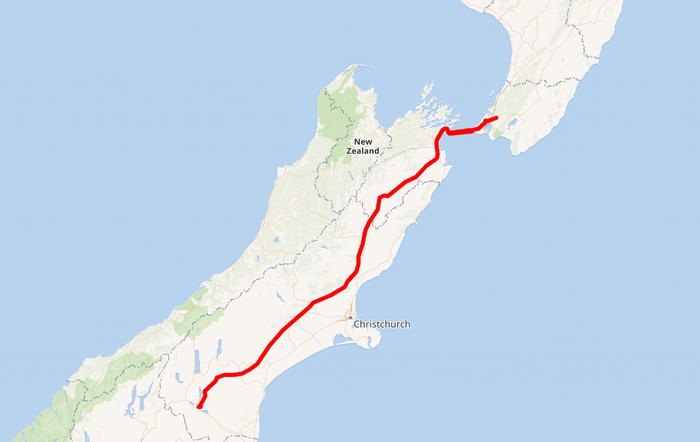Eye on electricity
HVDC inter-island cable: Benmore to Haywards
- Consumers
- Distribution

The high-voltage direct current cables (HVDC) electrically link the North and South Islands of New Zealand and are a vital piece of national infrastructure. These cables allow electricity produced in either island to flow to the other. Since the North Island is more populated, and therefore consumes more electricity, the HVDC typically transfers electricity northward during the day and southwards overnight. This pattern can differ, for example when South Island lake levels are low and or when North Island wind generation is high.
These cables also provide ‘security of electricity supply’1 in both islands, especially in winter when electricity demand is high. Electricity in the South Island can become constrained when the hydro lakes are low, and importing electricity from the North is needed to meet demand. Alternatively, if North Island wind generation is low, or other generation unexpectedly trips, more South Island hydroelectricity is brought North.
The first set of cables were known as pole 1 and was commissioned in 1965 to transfer 600 MW. Pole 1 stretched over 600 km, beginning at Benmore dam in Canterbury and ending at Haywards in Wellington. Most of the link consisted of overland transmission and then submarine cables along the Cook Strait. A second link, pole 2, was added in 1992. In 2012 pole 1 was retired and replaced with pole 3 in 2013. Together, pole 2 and pole 3 can transfer a maximum of 1050 MW northwards and 750 MW southwards.
Every year, pole 2 and 3 must undergo maintenance to ensure their continued reliability. Since 2019, maintenance occurs in February2 as demand for electricity is lower in summer and it is less likely to be disruptive to the electricity grid. This year, the outage spanned from 23 February to 6 March3, with at least one pole out during that time. During the weekend of 25-26 February, both poles went on outage, which electrically disconnected the islands. This caused price separation4 to occur. Prices were around $1/MWh in the South Island, as there was abundant hydro generation and less demand. At the same time, prices were around $150/MWh in the North Island, as thermal generation was needed to meet demand. Price separation is a legitimate market phenomenon, which reflects the underlying electricity market conditions in each island.
Some South Island hydro generators also schedule maintenance outages to coincide with the HVDC outage in February, as requirements for their electricity is low when it can’t be transported north. In comparison, the North Island hydro generators conserve water before the HVDC outage, as they need to meet North Island demand.
The Electricity Authority monitors the amount of electricity flowing between each island, and how this impacts electricity spot prices and market dynamics. Read our weekly trading conduct reports. More information and real-time HVDC flows can be found on our EMI website and on Transpower’s website.
1. What is security of supply?
2. Previously this occurred in November.
3. A second pole 2 outage is also occurring between March 21-30 March
Related News
Submissions published: comparison and switching consultation
The Electricity Authority would like to thank everyone who made a submission to our consultation paper Options to support consumer plan comparison and switch…
Industry exercise tests response to electricity shortfall
Thank you to everyone who took part in our Industry Exercise. Control room operators, communications and customer teams came together this month to work throug…
Updated guidelines on Code exemptions to support industry trials
Some new ideas or innovations can’t be trialled within the existing regulatory environment, and a temporary exemption from rules in the Electricity Industry Pa…